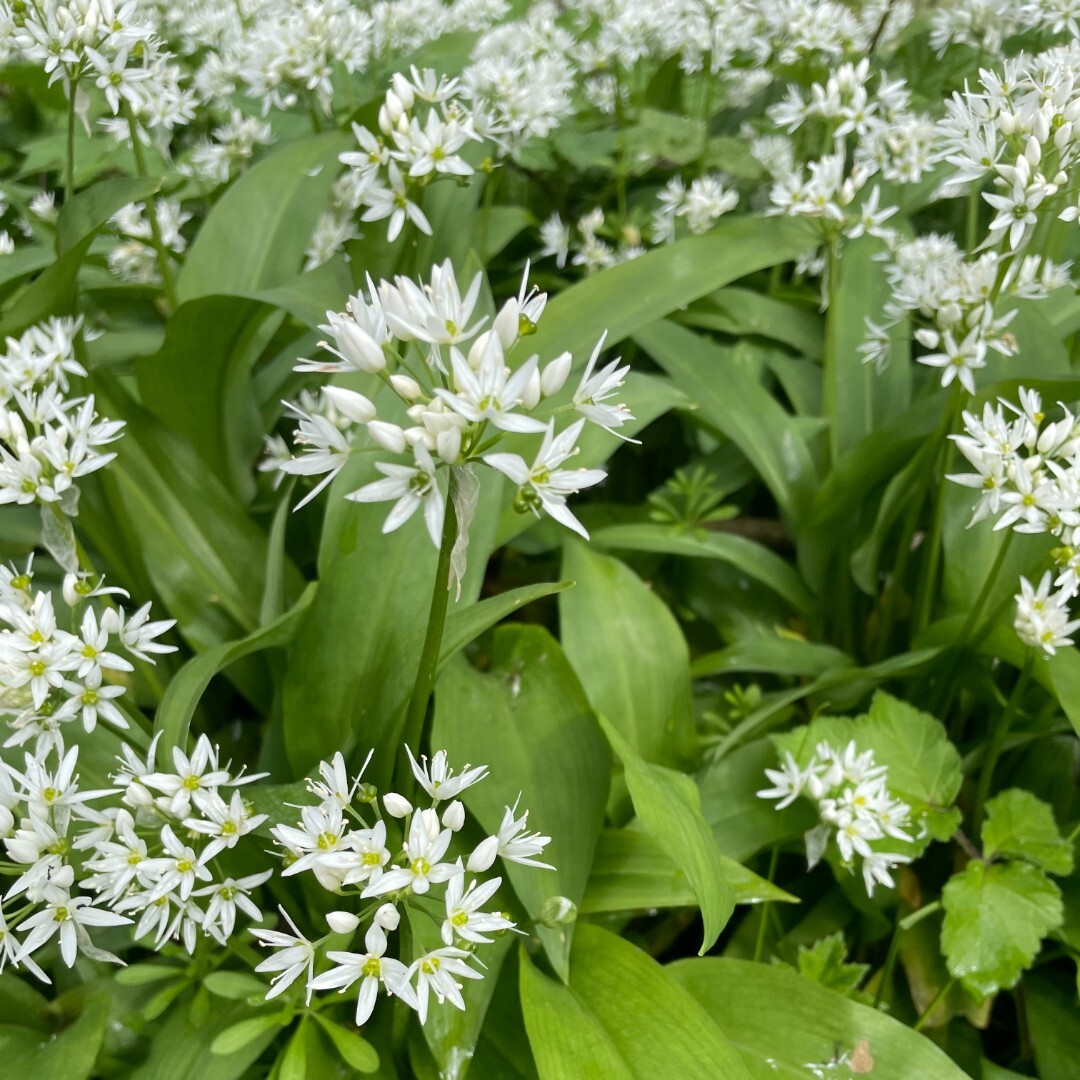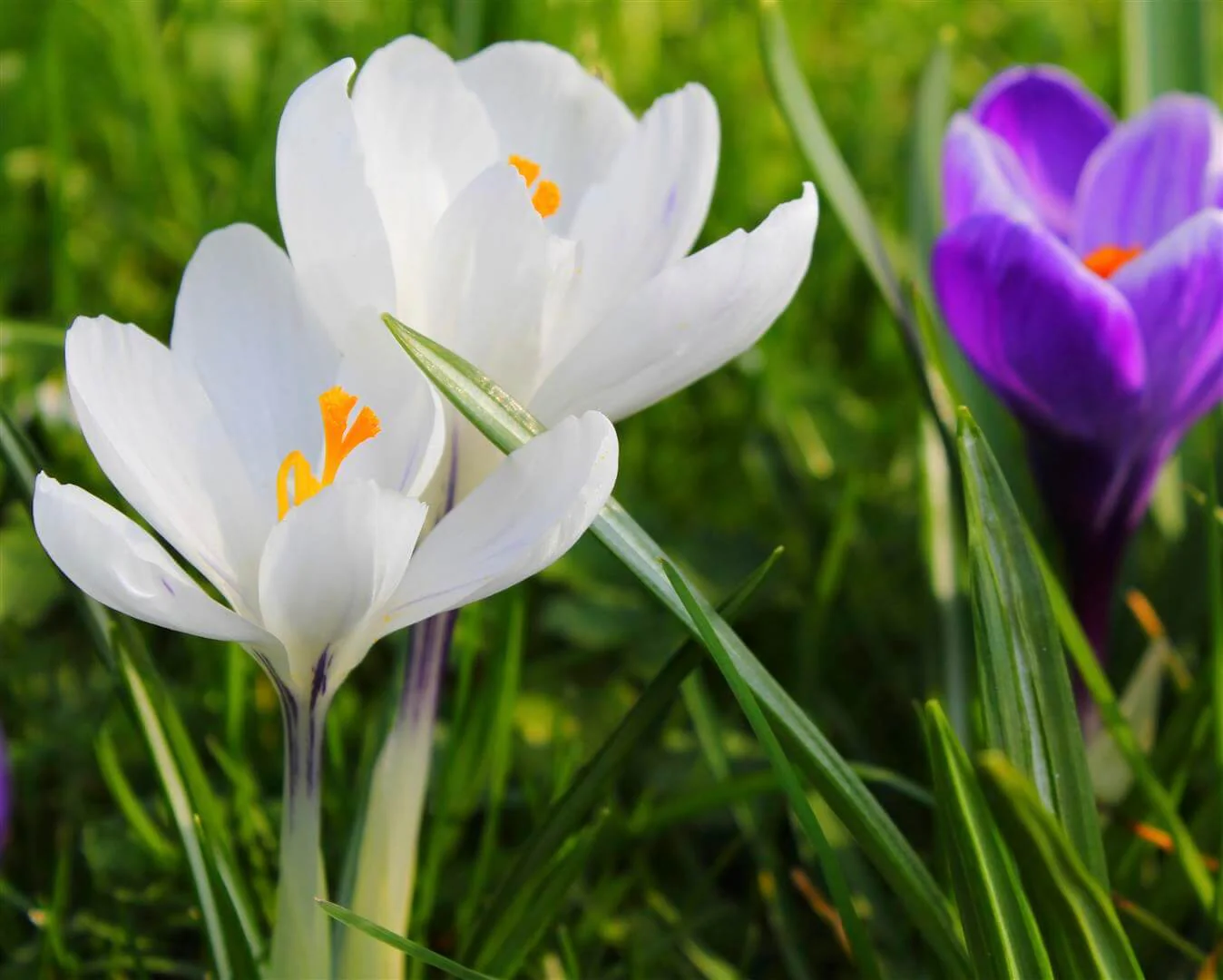What Is Wild Garlic?
Wild garlic, also known as Ramsons (Allium ursinum), is a springtime herb found in woodlands and shady areas from April to June. Its distinct garlic aroma and vibrant green leaves make it an easy spot when it comes to foraging. It is common throughout the UK and East Yorkshire.
Wild Garlic, Wildlife and pets
Wild garlic holds significant value for wildlife due to its various ecological contributions. The plant’s leaves, flowers, and bulbs provide essential food sources for numerous species, including insects, birds, and mammals.
Insects such as bees and butterflies are attracted to its nectar-rich flowers, aiding in pollination. Additionally, the foliage of wild garlic serves as a vital food source for herbivores like deer and rabbits. Furthermore, its pungent scent helps deter pests, offering protection to nearby plants.
It’s important to note that wild garlic can be toxic to dogs if ingested in large amounts.

How To Identify Wild Garlic
The Leaves
Long, pointed, and oval with smooth edges, emitting a strong garlic scent. They originate from the base of the plant and the bulb.
The Flower
Small, white, with six petals arranged in clusters atop slender stalks. Each cluster comprises around 25 flowers, held aloft by a single leafless stem.
The Fruit/seeds
Wild garlic reproduces via bulbs, bulbils, and occasionally seeds. The seeds are 2–3mm long, flattened on one side, and black. They are dispersed when the above-ground parts of the plant wither.
Hazards To Be Aware Of
For a secure foraging experience, adhere to the precise guidelines for identifying Wild Garlic. During its peak season, Wild Garlic stands out conspicuously in its natural habitat. Nevertheless, a few plant species may exhibit a similar appearance, especially at various stages of development.

Lily-Of-The-Valley
Lily-of-the-valley is a toxic plant with some similar features to wild garlic. This lily usually has two or three leaves on its stem. Lily-of-the-valley showcases bell-shaped white flowers when blooming. These bell-shaped flowers bloom for a short period in the May time.

Autumn Crocus
Autumn Crocus must be distinguished, as it is highly toxic. Unlike wild garlic, Autumn Crocus blossoms around September to October, a different time from wild garlic’s flowering period. Proper identification is crucial before foraging to avoid confusion and potential toxicity.
The flowers of the Crocus generally turn shades of pink to purple, but can sometimes retain its fresh white look. The petals on a crocus are generally larger than ones found on wild garlic.
How To Locate Wild Garlic
Wild garlic typically grows in woodland areas, moist soils, and shady places, although it can be found in other areas. Here are some common places to find wild garlic:
- Woodlands: Look in damp, shaded areas of deciduous woodlands, especially near streams or rivers.
- Hedgerows: Check along hedgerows, particularly in areas with partial shade and moist soil.
- Meadows: Wild garlic can sometimes be found in meadows, especially those with damp or marshy areas.
- Parks: Some parks or nature reserves may have patches of wild garlic, particularly in areas with natural or semi-natural vegetation.
- Gardens: In some regions, wild garlic may even grow in gardens, especially if they are left relatively wild or have damp, shaded areas.
Wild Garlic can be found in the Bluebell Woods at Burton Constable Holiday Park. You can read more about The Bluebell Woods here.

Ancient Woodlands
Wild garlic serves as a common indicator of ancient woodlands, signalling the presence of a habitat with significant ecological heritage. When exploring a wooded area, encountering wild garlic can suggest the site’s rarity and ecological value. Its presence often indicates the presence of rich, undisturbed soil and a diverse ecosystem, making it an essential component of natural habitats.

Uses of Wild Garlic
Wild garlic is a versatile plant with various culinary and medicinal uses. In cooking, its leaves add a distinctive, garlicky flavour to dishes and can be used in salads, soups, pesto, sauces, and as a garnish. The bulbs of wild garlic can be pickled or used similarly to cultivated garlic cloves in recipes. Additionally, wild garlic can be infused into oils or vinegars for added flavour.
Medicinally, wild garlic is believed to have antibacterial, antifungal, and antiviral properties. It has historically been used to treat ailments such as colds, coughs, and digestive issues.
Making Wild Garlic Pesto
You can find an excellent wild garlic pesto recipe from the Woodland Trust right here.
We tried making this ourselves, and it turned out great! We used:
- 100g wild garlic leaves
- 50g dried hard cheese
- 50g toasted pine nuts
- 1 tablespoon of olive oil
- Lemon juice
- Salt & Pepper
